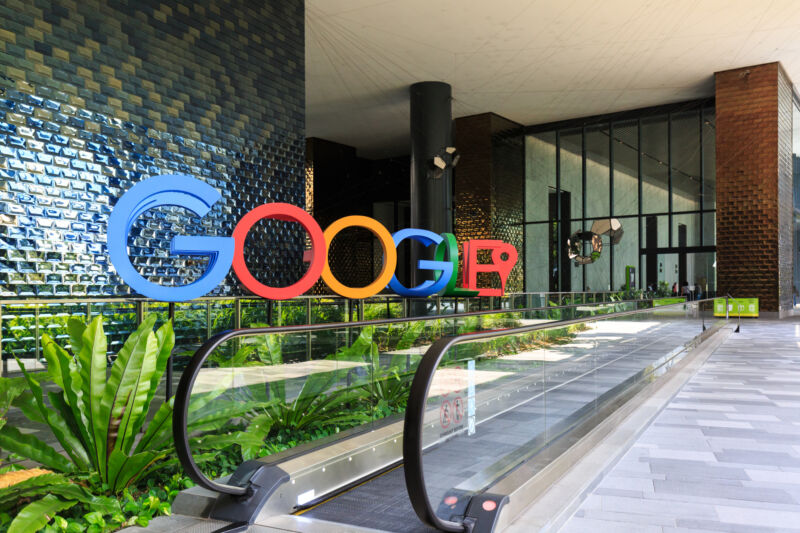
Enlarge / The lobby of Google's new campus and office in Singapore. (credit: Getty Images)
Google has a company-wide mandate to pump out products that use a ChatGPT-style language model, and the latest is Google NotebookLM. This Google's third notebook app, after Google Notebook (2008-2012) and Google Keep (2013- ). This was originally announced at Google I/O as "Project Tailwind," but now it's hitting limited public testing. Google doesn't quite describe this as a finalized product, calling it "an experimental offering from Google Labs."
The "LM" in "NotebookLM" stands for "language model," indicating this wants to apply ChatGPT-style smarts to your notes. It's hard to know exactly what Google is planning without access to it, but here's the full pitch:
NotebookLM is an experimental product designed to use the power and promise of language models paired with your existing content to gain critical insights, faster. Think of it as a virtual research assistant that can summarize facts, explain complex ideas, and brainstorm new connections—all based on the sources you select.
A key difference between NotebookLM and traditional AI chatbots is that NotebookLM lets you “ground” the language model in your notes and sources. Source-grounding effectively creates a personalized AI that’s versed in the information relevant to you. Starting today, you can ground NotebookLM in specific Google Docs that you choose, and we’ll be adding additional formats soon.
"Grounding" is language model lingo that means the AI will scan a document of your choosing and will treat the information contained therein as more important than the rest of the information in its training set. Google says, "While NotebookLM’s source-grounding does seem to reduce the risk of model 'hallucinations,' it’s always important to fact-check the AI’s responses against your original source material. When you're drawing on multiple sources, we make that fact-checking easy by accompanying each response with citations, showing you the most relevant original quotes from your sources."
Read 3 remaining paragraphs | Comments

Enlarge / The lobby of Google's new campus and office in Singapore. (credit: Getty Images)
Google has a company-wide mandate to pump out products that use a ChatGPT-style language model, and the latest is Google NotebookLM. This Google's third notebook app, after Google Notebook (2008-2012) and Google Keep (2013- ). This was originally announced at Google I/O as "Project Tailwind," but now it's hitting limited public testing. Google doesn't quite describe this as a finalized product, calling it "an experimental offering from Google Labs."
The "LM" in "NotebookLM" stands for "language model," indicating this wants to apply ChatGPT-style smarts to your notes. It's hard to know exactly what Google is planning without access to it, but here's the full pitch:
NotebookLM is an experimental product designed to use the power and promise of language models paired with your existing content to gain critical insights, faster. Think of it as a virtual research assistant that can summarize facts, explain complex ideas, and brainstorm new connections—all based on the sources you select.
A key difference between NotebookLM and traditional AI chatbots is that NotebookLM lets you “ground” the language model in your notes and sources. Source-grounding effectively creates a personalized AI that’s versed in the information relevant to you. Starting today, you can ground NotebookLM in specific Google Docs that you choose, and we’ll be adding additional formats soon.
"Grounding" is language model lingo that means the AI will scan a document of your choosing and will treat the information contained therein as more important than the rest of the information in its training set. Google says, "While NotebookLM’s source-grounding does seem to reduce the risk of model 'hallucinations,' it’s always important to fact-check the AI’s responses against your original source material. When you're drawing on multiple sources, we make that fact-checking easy by accompanying each response with citations, showing you the most relevant original quotes from your sources."
Read 3 remaining paragraphs | Comments
July 13, 2023 at 02:19AM

Post a Comment